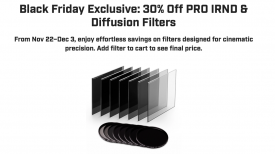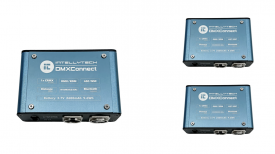By site editor Dan Chung:
One of the biggest features of the new Sony a7R II is the built-in IBIS 5-axis image stabilisation system. This combined with the internal 4K recording and Sony add-on XLR audio pack offers a very discreet way to shoot documentaries handheld.
Traditionally with a DSLR or mirrorless camera you are faced with the choice between handheld footage that has small jitters, or having to use some kind of shoulder rig to increase stability. Even the addition of an image stabilised lens doesn’t solve all instances of unsightly shakes. Some image stabilised lenses can also wobble the image in a nasty way when you pan the camera.
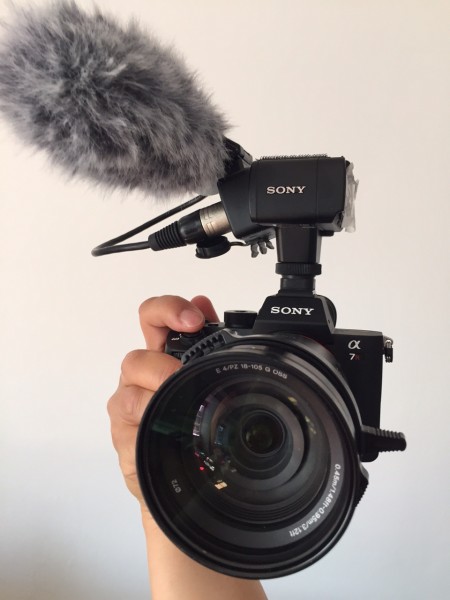
So what’s different about the a7R II then? It has a built-in 5-axis image stabilisation system that moves the entire sensor in an attempt to stop these jitters. This is similar to the system first seen on the Olympus OMD line but this time it is combined with much better video image quality.
I decided to go out and test it on the streets of London. This is the story of Nikki from Bulgaria, who has come to London to busk on the streets. At first she appears to be like the other buskers trying to make a living performing. But all is not what is appears to be…
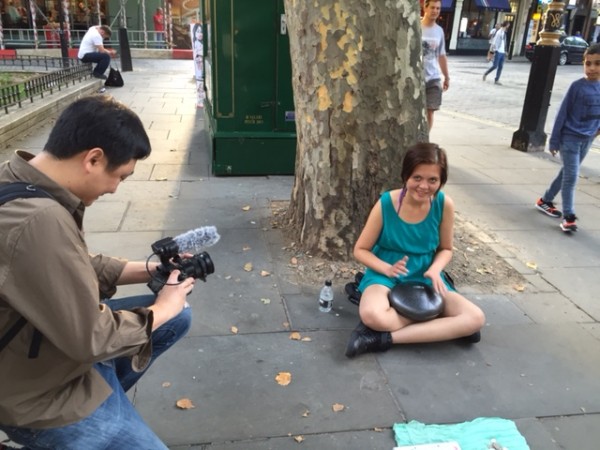
The shoot:
I wanted to shoot the story forcing myself to observe one rule: No tripod. Every shot had to be handheld.
For the shoot I used three lenses. The 18-105mm f4 G power zoom lens from Sony, a Zeiss 12mm f2.8 Touit, and a Zeiss 35mm Loxia f2 for the main interview. Keeping things small mean’t I had no problems at all shooting in the London streets. A bigger camera would certainly have attracted unwanted attention. With the a7R II setup I looked like a tourist.
The S35 4K recording mode of the a7R II means that you can use the APS-C 18-105mm for run-and-gun shooting. It isn’t the greatest lens in the world but it does have a useful wide angle to telephoto range for an affordable price. It is also much smaller than other lens options with a similar range. The 72mm front filter thread means that you can fit regular neutral density filters or Vari NDs. It also has its own built-in OSS image stabiliser which can be used to augment the camera’s built-in one.
In the past the 18-105 had a reputation for having excessive distortion when used in 4K on other Sony E-mount cameras like the FS700. It seems that Sony now have software to correct this in the a7R mkII, which does a reasonable job. Of course the image isn’t up to cine lens standards but then neither is the cost. You can make your own mind up about the image it produces after seeing the video. Every shot was wide open at f4 (no ND filter was used most of the time).
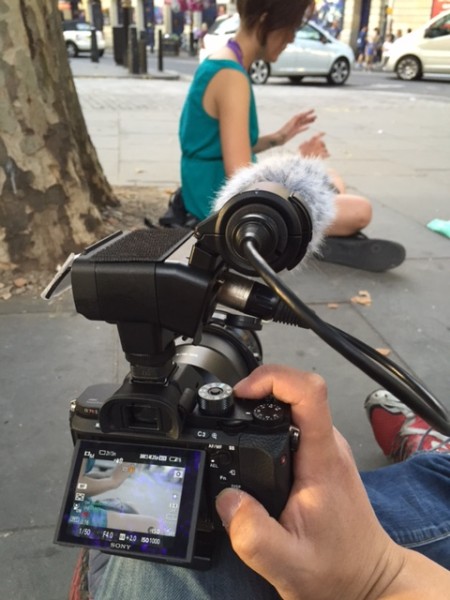
In use I found the lens to quite tricky to use thanks to its fly-by-wire focus ring. This wasn’t helped by the focus magnification function on the a7R II electronic viewfinder – I found it didn’t ‘ping’ into focus when sharp and therefore wasn’t easy to use. Other users might prefer to use peaking if shooting at a modest aperture like f4. I didn’t find the autofocus at all helpful for any moving subject and was set to manual focus for the whole shoot.
Maybe Sony can be persuaded to make a ‘cine’ version of this lens with ‘proper’ mechanical manual focussing in the future – it would be better suited to the S35 sensor size than the 28-135mm f4 G that they currently sell for cine cameras.
Despite these handling issues I managed to get things in reasonable focus most of the time. In short the 5-axis stabilisation worked a treat. As long as I was relatively steady the system kicked in and provided the extra bit of stability I needed. I found I could move very quickly between shots and get results that looked they had been shot using a shoulder rig. The whole video was done in two or three hours.
I felt that the stabilisation was close to that which I had encountered with the Canon C300 mkII and 35mm f2 IS lens I tested a couple of weeks ago (see video below) – which is no mean feat as the a7R II is much smaller and lighter, and therefore more likely to move around. The Canon needs the very latest image stabilised lenses to do this. The Sony can do 5-axis stabilisation with most Sony lenses, even those with no in-built stabiliser. Adapted lenses will benefit from 3-axis stabilising but not the full 5. (Nore: There is still confusion over whether Canon lenses on a Metabones EF to NEX Smart adapter or Speedbooster will also offer 5-axis stabilisation or just 3-axis).
For the shoot the camera was set to record 4K internally at 100 Mb/s. As both lenses were only APS-C the camera had to be set in the S35 crop mode. The profile was S-Log2 with S-gamut.
One thing I discovered about half way into the shoot was that the camera has a tendency to overheat when recording in 4K for extended periods. At first a yellow warning sign pops up on the screen, then a few minutes later the camera shuts itself down with a black warning saying it needs to cool down. This is not something I have experienced in normal shooting with either the Panasonic GH4 or Sony a7S. The last time this happened to me was when using a Canon 5D mkII in hot conditions. During the shoot it was warm weather but not scorching hot, so I expect it is the 4K recording that is creating the excess heat. I lost several shots while waiting for the camera to cool down.
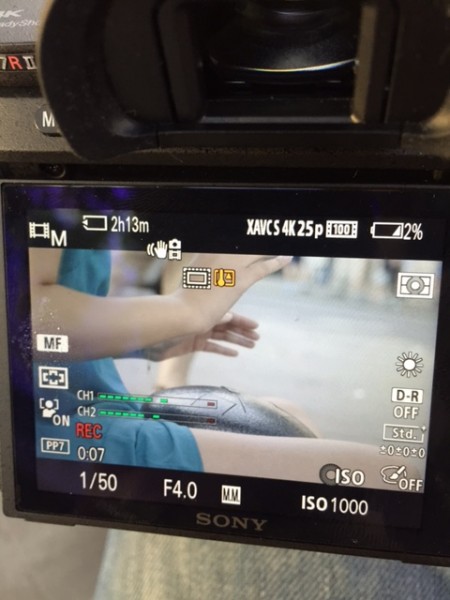
I can’t see a way around this other than to perhaps try shooting instead in 1080P HD, or 4K to an external recorder like the Atomos Shogun. I haven’t tested either of these options yet but unless this can be resolved I would be very reluctant to use the a7R II as my only camera on a long documentary shoot.
The image was graded very quickly using Premiere’s new Lumetri color and a delut look up table (LUT) from James Miller called Hyde Park. I’m sure the result could be better but hopefully you will get the idea. I’ve included an ungraded version for you to see below, or on Vimeo if you want to download it:
I believe the benefit of 4K delivery to be limited for this kind of handheld documentary work. The a7R II was pretty much in continual motion and therefore the images are inherently slightly blurred. To see fine 4K detail I think the camera really needs to be locked down on a solid tripod. That said, when viewed in HD the image holds up well and I was impressed.
Conclusions:
On the whole I loved the way the small a7R II package worked on the run. It offers the benefits of a Super 35mm sensor with reasonable low light capability, and a smaller footprint than most professional camcorders like the Sony EX-1 or new Panasonic DVX-200. In fact its closest competition for documentary shooting might come from it’s cousin the RX10 II, or the Canon XC10. Ultimately I prefer the image from the a7R II to either of these, but having to use ND filters is always going to be a pain with compact system cameras. Still, this is a small price to pay for the result, the only lingering concern being the overheat issues which I hope I can resolve somehow.




